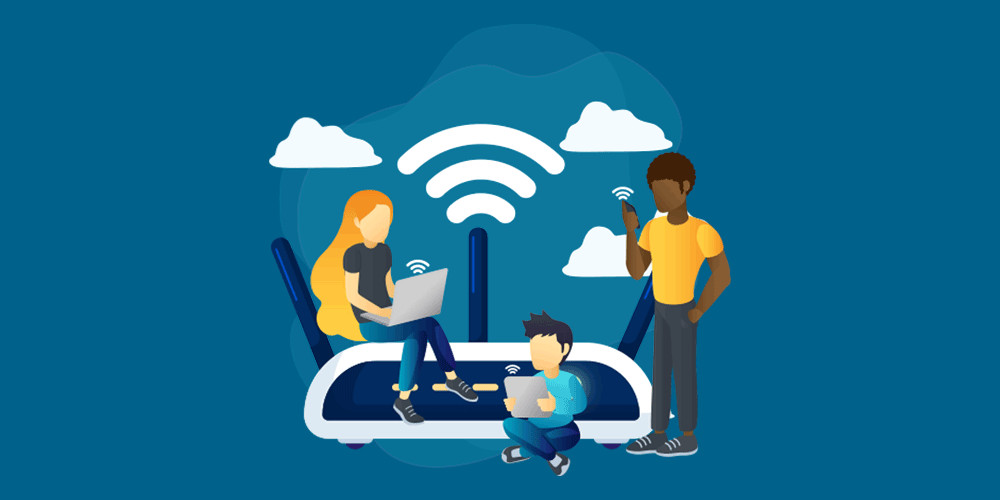The term “internet apocalypse” refers to a hypothetical scenario in which a catastrophic event or series of events causes a widespread and prolonged disruption to the internet infrastructure, leading to a significant loss of connectivity and functionality. While such an event has not occurred on a global scale, there are several potential factors and risks associated with the internet that could contribute to a partial or localized disruption. Here’s what you need to know about the internet apocalypse:
Cyber Attacks:
One of the most significant threats to internet stability is the risk of large-scale cyber attacks. Malicious actors, such as hackers or state-sponsored entities, may target critical internet infrastructure, causing disruptions in services and potentially impacting global connectivity.
Natural Disasters:
Natural disasters like earthquakes, hurricanes, or severe storms can damage physical internet infrastructure, such as undersea cables, data centers, or cell towers. These damages can result in regional or localized internet outages.
Technical Failures:
System failures, software bugs, or hardware malfunctions within the internet’s underlying infrastructure can lead to service interruptions. These failures could affect core routers, servers, or network equipment, disrupting internet access for users.

Internet Governance Issues:
Disputes over internet governance and regulations could potentially lead to fragmentation or censorship, impacting the free flow of information across borders. Such developments may result in a segmented internet or restricted access to certain websites or services.
Dependency on Centralized Infrastructure:
The internet’s centralized nature makes it vulnerable to disruption. Many critical services rely on a small number of centralized data centers, cloud providers, or content delivery networks. If these centralized systems experience a significant failure, it could have cascading effects on various internet-dependent services.
Capacity and Bandwidth Limitations:
The exponential growth of internet usage, driven by the increasing number of connected devices and data-intensive applications, can strain the internet’s capacity and bandwidth. If the infrastructure fails to keep up with the growing demand, it may lead to degraded performance or localized outages.
Mitigation and Contingency Measures:
To mitigate the risks associated with an internet apocalypse, various measures are in place. These include redundancy in infrastructure, distributed networks, cybersecurity protocols, and disaster recovery plans. Additionally, international cooperation and collaboration among internet service providers, technology companies, and governments play a crucial role in addressing potential disruptions.

It is important to note that while the risks and vulnerabilities exist, the internet has proven to be resilient and capable of recovering from localized disruptions. Ongoing efforts are continually being made to enhance the robustness and security of the internet infrastructure to mitigate potential threats and ensure its stability.
Impact of solar activity on causing “internet apocalypse”
Solar activity, particularly solar storms or flares, can potentially disrupt or damage certain aspects of the internet infrastructure, although the likelihood of a complete “internet apocalypse” solely caused by solar activity is extremely low. Here’s how solar activity can affect the internet:
Geomagnetic Storms:
Solar storms can generate intense bursts of charged particles and magnetic fields that are ejected from the Sun’s surface. When these particles reach Earth’s magnetosphere, they can induce geomagnetic storms. These storms can disrupt the normal operation of power grids, communication systems, and satellites, which can indirectly impact internet connectivity.
Satellite Communication Disruption:
The internet relies on a complex network of satellites for global connectivity. During intense solar activity, satellites in orbit can experience interference and damage from high-energy particles. This interference can cause disruptions or complete failures in satellite communication systems, affecting internet access in certain regions.

High-Frequency Radio Interference:
Solar flares emit strong bursts of electromagnetic radiation, including radio waves. These radio waves can interfere with high-frequency radio communications used by some internet service providers for long-distance data transmission. In extreme cases, this interference can disrupt or degrade internet connectivity in specific areas.
Submarine Cable Damage:
Solar activity can indirectly affect the internet by causing disruptions to undersea fiber-optic cables. Severe geomagnetic storms can induce electric currents in long cables, which may damage or degrade their functionality. Submarine cables are critical for international internet connectivity, and any damage to them can impact global internet traffic.
It’s worth noting that while solar activity can pose challenges to certain aspects of the internet infrastructure, the impact is usually temporary and localized. Moreover, significant efforts have been made to protect and mitigate the effects of solar activity on critical systems, including implementing safeguards, redundancy, and monitoring systems.
Overall, while solar activity can have some influence on internet connectivity, the internet is designed to be resilient and has measures in place to cope with various disruptions, including those caused by solar events.











